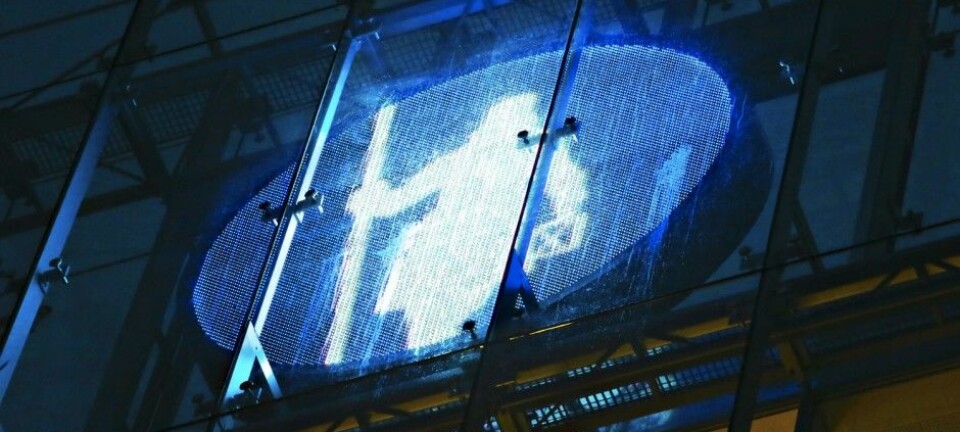
Why looking at social media at work disrupts your concentration
OPINION: You might have heard of the bystander-effect, but what about the Pinball-effect, which disrupts your attention on important tasks?
Billions of workers today have access to social media--whether you're on Wall Street, in India, Turkey or Scandinavia. Lives are permeated by the opportunity to connect, log-on, share, "like" or comment on an almost endless range of items and issues: from private achievements of friends or relatives over silly videos to more serious discussions of politics, religion, and societal problems.
The rise of social media may be described as an explosive increase of communicative spaces that transcend traditional boundaries. Social media enables information flows and opens channels not seen before; and as the geography of these communicative flows are dynamic channels constantly changing, the cognitive orientation becomes ever more difficult.
Moreover, administering the flows is often chaotically random relying on our spontaneous desire to check one's phone or e-mail account. In this way, our immediate digital environment seems to be ever more subversively encroaching upon our physical work surroundings through their technological omni-accesibility.
Unique digital platforms are spaces of information that induce certain rules and certain types of behaviour, which might often conflict with other unique spaces of information (physical as well as digital). One might be engaged in both a private conversation on WhatsApp whilst discussing on Facebook as well as checking one's e-mail account while trying to figure out what’s going on with this spread sheet at the office.
All these 'spaces' are full of information but they're not necessarily compatible. A high degree of compatibility, of course, connects the systems; that is, when unique features of the information flow are shared, differences between systems are lowered. It is hence not the shifting of programmes but the shift in information structure, which is analytically crucial.
A platform like Facebook is not singlehandedly a unique space, but a myriad of spaces with vast sets of information. For example, my rugby group is different from both my newsfeed and the Messenger application. In this way, platforms, which are able to convey communicative flows are both the transmitters of communication and, in turn, conditions the uniqueness of the way information is structured.
The pinball effect
The pinball effect, as we dubbed it, is exactly the psychological repercussions, which stem from frequent shifts in information structure. In other words, the attempt to divide attention to different sets or chambers of information simultaneously.
The pinball should illustrate the awareness which is "thrown" or "dashed" by enabling technology ("the pinball machine") towards various information clusters that each demand to be made sense of. Concentration, as an item, is bouncing unsystematically between different sets of information. On their own, these sets or spaces are harmless, but in pairing or juxtaposing within the same conscious agent they result in cognitive diffusion which leads to disorientation, confusion and, most literally, de-localisation. Or put simply: inattentiveness and loss of concentration.
Shifts between information structures are in effect obstructive only when the sets are incompatible. If the sets were part of the same system (not just similar ones), then no pinball effect would arise--although many other cognitively harmful effects surely could.
As such, the pinball effect occurs when an agent shifts between two information sets or 'spaces', and this shifting may be as harmful and bedazzling as driving under influence. For example, Strayer, Drews & Crouch (2006) concluded from an unrelated study that "the impairments associated with using a cell phone while driving can be as profound as those associated with driving while drunk". Why? Let us illustrate this specific point with the general point about how pinball effects occur.
Doubling space and splitting attention
In the first space, the driver's space, obvious skills must be applied to traffic rules. More importantly, unique concentration is pertinent for braking, avoiding objects on the road as well as other security measures that must be mentally and physically addressed.
In the second space, the conversationalist's space, there is no unique use for driving skills whatsoever, but there is a unique demand for the uses of language, grammar structure and basic comprehension which furthermore induces the need to cater to (and engage in) a particular social structure, the processing of specific information and, of course, attentive listening for aspects of mood, accentuation and voice intonation.
These are two incompatible sets, which occur simultaneously within the mind of the driver. In our terms, the pinball effect explains the impaired behaviour of the driving-cum-conversational agent in terms of information structures. Ironically, the doubling of attention seems to imply impaired attention to both tasks. The pinball effect, i.e. lack of concentration from information shifts, is often seen in multitasking agents (Ophir et al. 2009 & Gunderman 2013), but not exclusively limited to it.
The pinball effect can thus be described as the doubling of space, that is, an attempted splitting of attention. Doubling induces an exhausted awareness, (Xu et al. 2016; Levitin 2015) which caters to different sets of information at the same time, thus creating the pinball effect leading to impaired concentration. Studies show that it can take up to 15 to 25 minutes for the brain "to get back where it was after stopping to check an email." (Heid 2015). This is easily seen in the cellphone-using driver, but also in the Facebook-checking office worker or student and in the coffee-drinking café guests whose tables are often occupied by a couple of "attention-seeking" smart phones.
More instructively, the pinball effect is harmful to tasks that must be performed with sufficient attention (Lepp et al. 2014). Therefore, the pinball effect should be reduced as much as possible in spaces of learning, education, and where even minimal concentration is required.










